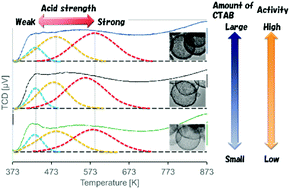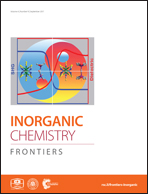The influence of the pore structure of hollow silica–alumina composite spheres on their activity for hydrolytic dehydrogenation of ammonia borane
Abstract
The effect of the pore structures of hollow silica–alumina composite spheres on their activity for the hydrolytic dehydrogenation of ammonia borane has been studied. Following a calcination process that resulted in hollow spheres, the spheres’ shells were coated on spherical polystyrene particle templates. The pore structures of the hollow spheres were controlled by adding a surfactant, cetyltrimethylammonium bromide (CTAB); the volume and homogeneity of the mesopores in the shell of the hollow spheres increased with increasing amount of aqueous CTAB solution. The hollow spheres with a large volume and homogeneous mesopores showed high rates of hydrogen evolution from aqueous ammonia borane solution. The highly active hollow spheres prepared with 5 mL of aqueous CTAB solution showed a considerably high turnover frequency (TOF), although the hollow spheres did not have a significantly high BET surface area or a large quantity of acid sites. This suggests that the activity for hydrogen evolution from aqueous ammonia borane solution in the presence of the hollow spheres with homogeneous mesopore structures was unexpectedly high.



 Please wait while we load your content...
Please wait while we load your content...